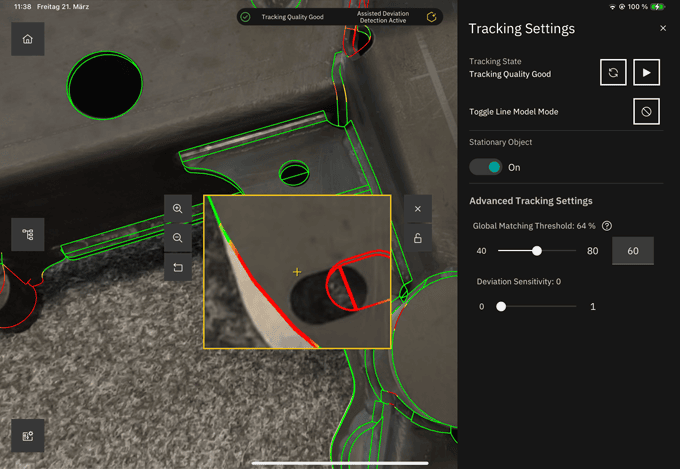Study: Only every second company was ready for social collaboration before Corona
It is now becoming clear that there is no way around social collaboration. Because many employees are now permanently in the home office. But they do not always have the appropriate tools or devices. The Swiss Social Collaboration Study has found that companies have made progress in recent years, but there is still room for improvement in the provision of modern tools.

Nevertheless, 53% of the companies in Switzerland have already introduced collaboration tools or started such projects before the Corona crisis. "Companies in which digital collaboration was already established before the crisis currently have an advantage.
They were able to change their daily work routine very quickly and with less friction. All those who now have to find ways should learn from the experiences of others," explains Dr. Eric Schott, CEO of Campana & Schott. "In doing so, they can directly improve one thing in particular: the prudent and communicatively well-supported introduction of the tools, because this has often been poor up to now."
The Technical University of Darmstadt and the management and technology consultancy Campana & Schott have conducted the study annually since 2016, and also for Switzerland since 2017. This year, 1,079 employees from Switzerland, Austria and Germany were surveyed about their experiences with networked collaboration. More than a quarter (29%) of them work in direct customer contact or manufacturing and thus belong to the firstline workers.
"Companies that already use social collaboration tools have a clear advantage in the current situation: on the one hand, their IT does not have to frantically introduce basic services for remote work. On the other hand, their workforce has a higher level of digital fitness, which includes both functional tool usage and a corresponding mindset," says Boris Ovcak, Director Social Collaboration at Campana & Schott. "In addition to work capability and efficiency, social collaboration promotes a digital corporate culture. However, these positive aspects do not come about by themselves; rather, practical use cases and comprehensive change management based on them are the prerequisite."
Higher degree of maturity, higher work efficiency
On a scale of 1 to 7, social collaboration maturity has increased almost every year since 2016 (2016: 3.48, 2017: 3.28, 2018: 3.96, 2019: 4.05, 2020: 4.08). A high maturity level means that current digital technologies are frequently used for information and communication, while a low maturity level means largely analogue approaches or established technologies such as emails. For Switzerland, the social collaboration maturity level is 4.07 and thus just below the overall maturity level.
Just five years ago, social collaboration initiatives played no role at all in 43% of the companies. Even before COVID-19, this situation had changed significantly. At that time, only 29% of the respondents stated that their company was not yet planning or implementing any corresponding projects. Based on the data history, the study proves that collaboration in companies is becoming increasingly digital. The promotion of a digital corporate culture, the increase in customer satisfaction, the improvement of innovative ability and increased efficiency are the central motives here.
"That the introduction of social collaboration tools makes sense for companies is proven by the correlation between social collaboration maturity and employees' work efficiency," says Boris Ovcak, Director Social Collaboration at Campana & Schott. "A high maturity level is clearly associated with increased efficiency. This correlation has been consistently proven over the past five years. Companies benefit in a very tangible way when employees use social collaboration tools intensively."
Firstline workers remain digital laggards
Currently, employees of companies in Switzerland with a high level of social collaboration maturity are 30% more efficient than employees of companies with a low level of maturity. For firstline workers, this is 23%. Although they would benefit more from social collaboration tools, firstline workers lag significantly behind information workers in terms of their maturity level (3.76) (4.2).
Accordingly, work efficiency in the DACH region is also lower for firstline workers (4.62) than for information workers (4.84). This is primarily due to the lack of equipment. For example, one in six firstline workers does not have a digital device to access social collaboration tools. This makes them around 26% less efficient than colleagues who can use such tools.
Among firstline workers, 30% use a shared computer and just under a quarter use a private device for social collaboration tools. It is therefore not surprising that only around 40% of firstline workers are satisfied with the digital equipment in their workplace. Some 60% see considerable need for improvement here. Among employees without access to social collaboration tools, as many as 86% are dissatisfied with the equipment.
Customer satisfaction increasingly important
As in previous years, improving corporate culture remains the most important goal in the DACH region (16%). The focus here is primarily on interdisciplinary collaboration, innovation orientation, willingness to change and affinity for technology. Among the goals for the introduction of social collaboration tools, customer satisfaction has reached second place for the first time (15%). This aspect has risen continuously in relevance since 2016, when it was still ranked 7th.
Comprehensive change management necessary
Employees need to accept and use social collaboration tools. Yet around 65% of all companies in Switzerland do not take any measures to do so. Those who do change management at all focus on support from company management (31%). Less focus is placed on the concrete requirements of employees (21%) and the time to deal with them (26%). For example, only around a quarter of employees are satisfied with the way the introduction process went. Companies with comprehensive change management measures, on the other hand, achieve higher employee satisfaction and a significant increase in work efficiency.
Social collaboration supports agile methods and AI
Social collaboration tools already support agile methods, especially Scrum, Kanban and Design Thinking, in almost two-thirds of companies. Almost 70% think that this increases the efficiency of communication among employees and that projects can be adapted more quickly.
Just over a quarter of respondents in Switzerland believe AI is still in its infancy. Yet despite the acknowledged high potential, almost three quarters do not use any business intelligence or analytics tools at all to evaluate business-relevant data. The biggest obstacles are IT security, data protection and the high complexity of the technology. However, this is set to change in the near future - companies see emerging usage scenarios above all in the area of chatbots, automatic image processing and machine translation. This means that they would rather have practical solutions that promise a high benefit with little effort.
To the complete study: www.campana-schott.com/sscs2020









